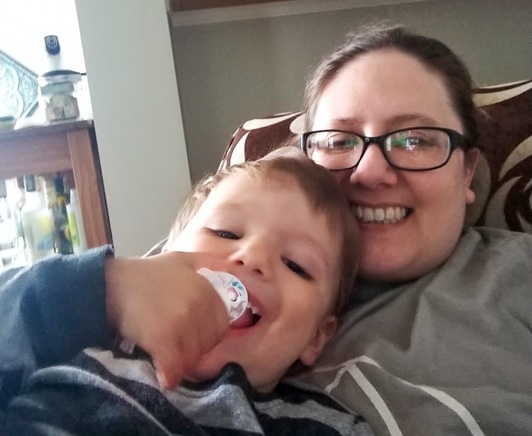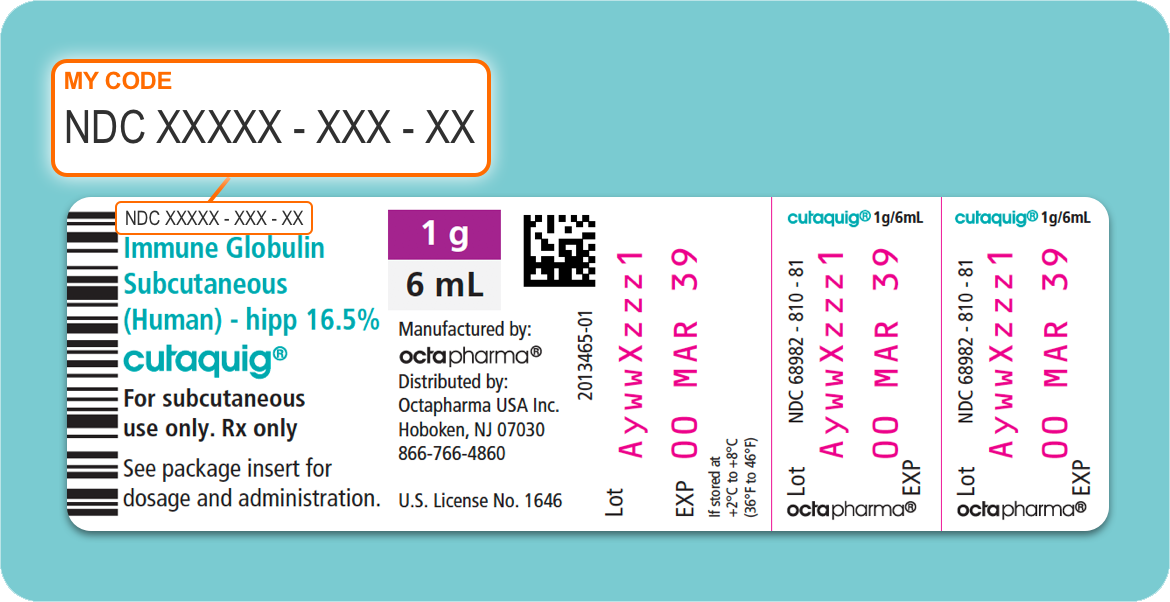
A Childhood Riddled with Illness
 I was one of those kids who was always picking up every bug, constantly bringing home illnesses. My mom would take me to the doctor who would say “she’s just a kid; kids get sick. It’s just an ear infection. It’s just strep.” I had several ear infections when I was an infant; I had my tonsils and adenoids removed at five – then it became sinus infections. Then migraines. It was just one problem after another. My parents really did not think to question the doctors, so they did not go searching for other answers. We just lived with constant illness. Once I moved to Chicago and went to college, I got even more sick. I was living in dorms and training to be a teacher with lots of exposure to people and infection. In my senior year I went to see a specialist in allergy and immunology. I had no idea what an immunologist did. I just figured I was getting sick so much because I was living in a new place with new allergens. That physician started the testing process for primary immunodeficiency (PI) because she had a suspicion about the cause of my problems. She gave me a pneumonia vaccine. Within six months I got pneumonia, and it was one of the strains I had been inoculated against. She tested me for the antibodies, and as she predicted, they were no longer in my system. That was the first real validation of my PI diagnosis. Even though I was sick with pneumonia for several months, I was relieved to finally get a label for my symptoms. There were so many unknowns then. I did not know anything about PI; I did not know anyone with the disease. It never crossed my mind that there could be support groups available. It took me 4 years to realize that there were other people in the world like me. I was completely clueless. I did what most newly diagnosed PI patients do – I did exactly what my doctor said without asking a single question. My doctor connected me to a specialty pharmacy and I started on infusion treatment.
I was one of those kids who was always picking up every bug, constantly bringing home illnesses. My mom would take me to the doctor who would say “she’s just a kid; kids get sick. It’s just an ear infection. It’s just strep.” I had several ear infections when I was an infant; I had my tonsils and adenoids removed at five – then it became sinus infections. Then migraines. It was just one problem after another. My parents really did not think to question the doctors, so they did not go searching for other answers. We just lived with constant illness. Once I moved to Chicago and went to college, I got even more sick. I was living in dorms and training to be a teacher with lots of exposure to people and infection. In my senior year I went to see a specialist in allergy and immunology. I had no idea what an immunologist did. I just figured I was getting sick so much because I was living in a new place with new allergens. That physician started the testing process for primary immunodeficiency (PI) because she had a suspicion about the cause of my problems. She gave me a pneumonia vaccine. Within six months I got pneumonia, and it was one of the strains I had been inoculated against. She tested me for the antibodies, and as she predicted, they were no longer in my system. That was the first real validation of my PI diagnosis. Even though I was sick with pneumonia for several months, I was relieved to finally get a label for my symptoms. There were so many unknowns then. I did not know anything about PI; I did not know anyone with the disease. It never crossed my mind that there could be support groups available. It took me 4 years to realize that there were other people in the world like me. I was completely clueless. I did what most newly diagnosed PI patients do – I did exactly what my doctor said without asking a single question. My doctor connected me to a specialty pharmacy and I started on infusion treatment.
One Thing after Another
It took many attempts with various medications to find what really worked for me. From the beginning I was put on SCIg infusion. My first product absolutely did not work for me – I was still getting sick and I wasn’t feeling any better. We tried adjusting dose, but that did not change the results. In fact, I got headaches, and my numbers actually went down. So, I went onto my second infusion product. I thought I was doing very well on that drug, but then I had two serious adverse reactions back-to-back, both of which landed me in the ER. One was a bad site reaction – my sites were swollen to the size of softballs and very painful. The other reaction was the beginnings of aseptic meningitis. My doctor thought that perhaps I had gotten a less optimal batch of medicine, so after a respite during which my body recovered, we tried again with the same drug, with the same result. At that point I switched to my third drug, which I took via both SCIg and IVIg modes of administration. I started it with SCIg, but because I have neurological issues, my dosing requirement is very large, so I started administering it via IVIg. But having to infuse intravenously over the course of 4 days every month, having a constant headache, and having to have other drugs, like prednisone, in my system, it just was not worth it to me. I was then, and still am, working full time – the treatment just took too much time. Sure, you can infuse on Saturday and Sunday, but are you also going to take off another Monday and Tuesday every month? It just wasn’t conducive to my lifestyle. So, I returned to SCIg administration. I was doing well on my first SCIg medication after making the switch – I didn’t require any pre- or post-medication, or anything like that. But then I encountered supply issues and recalls. You just have to know that you run that risk when you are using a drug that is used for both IVIg and SCIg – availability can be challenging. It made me very nervous.
Finding a Solution in cutaquig
At that point cutaquig had just come onto the market, and I wanted to give it a try. I talked with my doctor, and she said yes. She knows that I do a lot of research. A great partner to me, she listens and will let me drive my treatment process. She is also exceptionally responsive. I’m lucky. Usually patients new to a PI diagnosis just take whatever they are told to take. As you get more experienced, you know to ask questions and to insert yourself into your disease management. Some physicians are not interested in prescribing a relatively new drug to a patient – instead, they may go with something more familiar that they know they can get approved. Cutaquig was my idea, but I got the support I needed to make the switch.
 Cutaquig has really worked for me. I have been on cutaquig for over a year, with essentially no issues, including illness and infection. I don’t require any pre- or post-medications and I have been much more functional. I work full time, teaching 7th and 8th grade English. Right now it is remote teaching, of course. If I wanted to, I could infuse while teaching – it is that easy for me. Nobody would even know. I attribute my success with cutaquig to the way it is manufactured. I know that Octapharma has designed steps during production that may help reduce site reactions. Maybe there is a bit of luck involved – what I know is that I have only had one infection since I started taking cutaquig. Making it through cold and flu season without getting ill was amazing. I am able to have a fully normal lifestyle. I got my Master's degree last year – I was teaching full time, working part time as a Patient Educator for Octapharma, and going to graduate school full time as well. Burning the candle at both ends and exposed to 100 kids a day, without getting ill – that’s quite a change from my childhood!
Cutaquig has really worked for me. I have been on cutaquig for over a year, with essentially no issues, including illness and infection. I don’t require any pre- or post-medications and I have been much more functional. I work full time, teaching 7th and 8th grade English. Right now it is remote teaching, of course. If I wanted to, I could infuse while teaching – it is that easy for me. Nobody would even know. I attribute my success with cutaquig to the way it is manufactured. I know that Octapharma has designed steps during production that may help reduce site reactions. Maybe there is a bit of luck involved – what I know is that I have only had one infection since I started taking cutaquig. Making it through cold and flu season without getting ill was amazing. I am able to have a fully normal lifestyle. I got my Master's degree last year – I was teaching full time, working part time as a Patient Educator for Octapharma, and going to graduate school full time as well. Burning the candle at both ends and exposed to 100 kids a day, without getting ill – that’s quite a change from my childhood!
Words to Live by:
I have found that the more you know, the better prepared you are to manage your treatment and your life. Here is some of what I have learned along the way:
- You are your own best advocate. You know your body better than anyone else does. It’s ok to push back and ask questions. If your healthcare provider isn’t comfortable with that, find another one who is willing to work with you. Be an active participant in your treatment.
- Be prepared for how long everything takes. It takes a tremendously long time to get diagnosed. It can take up a month to get an authorization for a specific treatment. Then, don’t expect to feel better overnight. It will take a while for a medication to take effect and get you to where you want to be.
- Cultivate a support system. The disease can be isolating. Online resources are fantastic – you will learn about what others experience and their tips and hacks for dealing with issues that arise. Join groups like IDF and participate in their events and activities. And don’t forget IgCares – it is a fabulous resource for information, support, and community.
- Be proactive and self-reliant. Keep a supply of emergency meds at home. Be smart about equipping your house. Who expected a pandemic? I was lucky that I had just restocked all my supplies.
- Develop a good storage and organization system for your supplies – I organize my stuff in bins and drawers and it is tucked away by category. Some people use zip-lock bags or totes with one complete infusion supply in each – that makes it easy to “grab and go”. Find what works for you and stick to it.
- Be self-disciplined about your therapy. Do your infusions and stay compliant. Think ahead and plan your infusions around your needs and schedule. I have traveled to France and back without taking any infusion equipment. I infused right before I left and immediately upon return. Planning and preparation can make your schedule much more flexible.
- Live and enjoy your life. PI is not a death sentence; it’s just a bump in the road.




 Cutaquig has really worked for me. I have been on cutaquig for over a year, with essentially no issues, including illness and infection. I don’t require any pre- or post-medications and I have been much more functional. I work full time, teaching 7th and 8th grade English. Right now it is remote teaching, of course. If I wanted to, I could infuse while teaching – it is that easy for me. Nobody would even know. I attribute my success with cutaquig to the way it is manufactured. I know that Octapharma has designed steps during production that may help reduce site reactions. Maybe there is a bit of luck involved – what I know is that I have only had one infection since I started taking cutaquig. Making it through cold and flu season without getting ill was amazing. I am able to have a fully normal lifestyle. I got my Master's degree last year – I was teaching full time, working part time as a Patient Educator for Octapharma, and going to graduate school full time as well. Burning the candle at both ends and exposed to 100 kids a day, without getting ill – that’s quite a change from my childhood!
Cutaquig has really worked for me. I have been on cutaquig for over a year, with essentially no issues, including illness and infection. I don’t require any pre- or post-medications and I have been much more functional. I work full time, teaching 7th and 8th grade English. Right now it is remote teaching, of course. If I wanted to, I could infuse while teaching – it is that easy for me. Nobody would even know. I attribute my success with cutaquig to the way it is manufactured. I know that Octapharma has designed steps during production that may help reduce site reactions. Maybe there is a bit of luck involved – what I know is that I have only had one infection since I started taking cutaquig. Making it through cold and flu season without getting ill was amazing. I am able to have a fully normal lifestyle. I got my Master's degree last year – I was teaching full time, working part time as a Patient Educator for Octapharma, and going to graduate school full time as well. Burning the candle at both ends and exposed to 100 kids a day, without getting ill – that’s quite a change from my childhood!